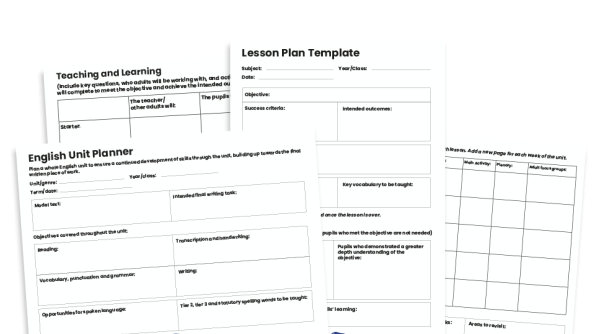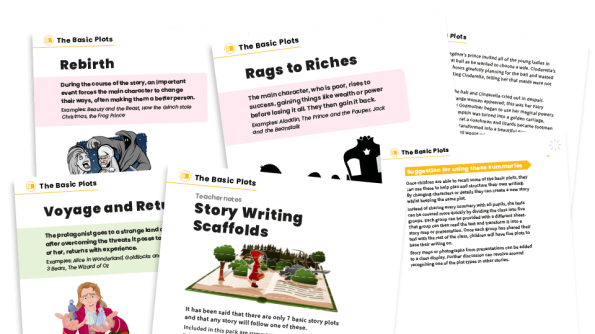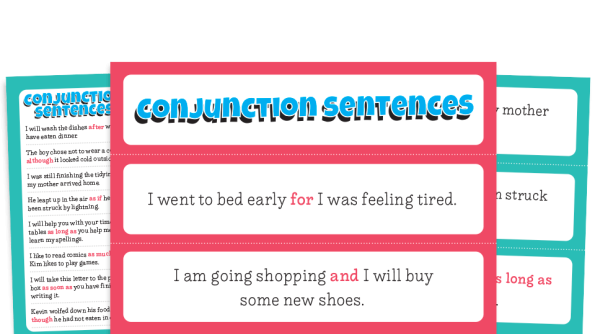Connectives – How to teach them in KS2 SPaG
Ensure children's writing holds firm by building a deep understanding of how ideas can be joined together

Imagine a brick wall without mortar. You can arrange the bricks as neatly as you like and the wall might even stand up for a while. As soon as the wind blows or someone leans against it, however, you know exactly what’s going to happen.
Now think about a written composition. You can arrange your beautifully worded sentences as skilfully as you like but, without logical connectives, they just don’t hold together. So, how do you get your pupils to use them in their own writing?
1
|
Conjunction disjunction
First, let’s clear up an issue that might have been troubling you. A few years ago, it felt to some teachers as if the thought police had turned their world upside down when they were ordered to call them conjunctions instead of connectives. This is a misunderstanding because there is a difference which is compounded by the fact that conjunctions are connectives but not all connectives are conjunctions.
So, what are connectives and how are conjunctions different? In short, conjunctions are words that join clauses within a sentence. Coordinating conjunctions, such as and, so and but, connect main clauses. Subordinating conjunctions, such as if, when and because, connect a main clause to a subordinate clause. Connectives, on the other hand, is the term used to describe any words or phrases that connect ideas, be they within as sentence, between sentences or even between paragraphs.
2
|
The connective word 'and'
Let’s start at the most basic level. Surely, the most basic connective is the coordinating conjunction and. You would be expecting your Year 1 children to be able to use this but, if they need a little help, try our grammar pack for joining words and clauses using and. In fact, you might find that you soon need to put more effort into getting them to use alternatives to and as, left to their own devices, young writers have a tendency to go on and on and on using and.
There is, of course, plenty more to know about conjunctions but that could take up a whole other discussion. For now, then, let’s concentrate on other connectives.
3
|
How to use connectives
As mentioned earlier, connectives are all about connecting ideas. There are different ways of doing this, however. They could be used for adding or listing (also, furthermore); they can help to sequence ideas or indicate time (earlier, finally); they can express cause and effect (therefore, consequently); they can also help to convey a contrast (although, unless). No doubt, you can think of other connectives examples as well as different ways in which they can forge links.
4
|
Conjunctive adverb
It is perhaps not surprising that adverbs and adverbials (groups of words that perform the same function as an adverb) are often used as connectives. After all, if the job of an adverbial is to modify the verb in order to indicate how, when or where the action took place, this will often create a link with other ideas in the text automatically.
For example, so-called ‘time adverbials’ such as first, next and later link ideas because they create a connected chain of events. Meanwhile, adverbials such as next door or on the other side of town make links by establishing one place in relation to another.
This is perhaps a good place to remind pupils that not all adverbs end in -ly and not all words that end in -ly are adverbs. For a more thorough look at this topic, try our Year 2 challenge mat which uses bright, appealing worksheets to help pupils understand adverbs, then challenge, test, explain and apply that knowledge.
5
|
Prepositions and the prepositional phrase
Depending on which dictionary you use, you are likely to see prepositions described as words that connect a noun to a verb or adjective. For example: You can go out to play after tea. This makes them connectives almost by definition.
You will also notice that words which can be used as prepositions often act as adverbs or key words in adverbial phrases. If you are brave, you might like to try to explain that prepositions need objects whereas adverbs do not and that a preposition with its object can form an adverbial. But, by this stage, your pupils’ heads might be in danger of exploding. You might want to defuse them with our Key Stage 2 cards and posters, illustrating 21 different prepositions.
6
|
SPaG worksheet activity for students
If all this discussion of terminology makes you feel like we’re getting off track, just remember that pupils are expected to show an understanding of it through the Grammar, Punctuation and Spelling SATs. So, before you return to the practical application of connectives, you could just help your pupils get these ideas clear in their heads with our KS1 SPaG Assessment and Revision resource pack.
7
|
Sentence structure – connectives in the classroom
The most important thing with connectives is getting your pupils to use them in their writing. At this stage, there is absolutely nothing wrong with giving them a limited list of examples to work with, perhaps as part of a word bank. This might include a set of time connectives for recounts or sequencing connectives for instructions. The point is that they understand the role they play in good writing and get a feel for where to put them.
8
|
Simple sentence, compound sentence, complex sentence
For those who are already getting the hang of connectives, try introducing some stylistic pointers. The most obvious one is to avoid using the same connective time and time again. Another good tip is to ensure that their writing includes a variety of sentence lengths and styles; even the most deft use of connectives can begin to grate if they are always located in the same place, such as at the beginning, in sentence after sentence. Finally, remind them that there are other ways of creating cohesion within writing … but that is probably a whole new discussion too.
You may also be interested in...
> Year 1 and Year 2 Common exception words – How to make them stick
Latest Stories

Year 1 and Year 2 Common exception words – How to…

Imperative verb – 10 ways to teach bossy verbs
All Stories
Save hours of planning.
Get loads of benefits.
- Access 1,500+ resources
- Over 80 expert CPD guides
- New resources every week
- Full curriculum coverage
- Member-only
premium collections - Plus lots more...
Trending resources
Browse by Year Group
Year
1
Year
2
Year
3
Year
4
Year
5
Year
6








